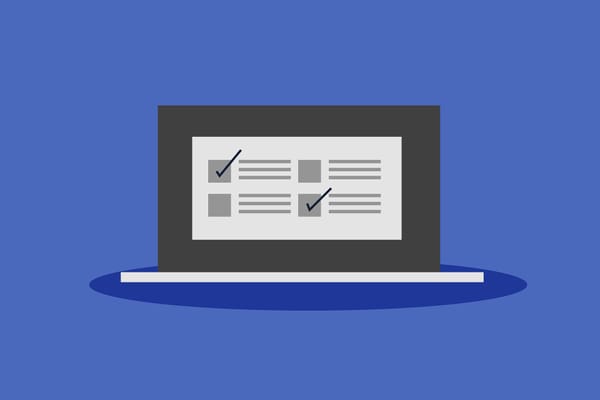How to Spot and Protect Against Fake Data Breach Notifications

If you’re a seasoned netizen like me, chances are your personal information has been involved in a data breach or two. From major hacks that expose credit card information, health data and other identifiable information, cybercriminals keep on stealing the number one commodity in the digital world – our data.
So, we know that data breaches are widespread and, sooner or later, consumers must be notified in accordance with local legislation such as the GDPR in the EU.
But how do you know if these alerts are legitimate or if cybercrooks have begun exploiting the event to steal even more sensitive data or defraud customers?
What is a FAKE data breach notification?
Fake data breach notices are fraudulent messages designed to look like legitimate alerts from companies or organizations. Cybercriminals can target anyone with these notifications via email, text messages, or even phone calls and claim their personal information has been compromised.
You should also be aware that scammers follow the news and impersonate organizations that have been breached.
Fake data breach notifications used to phish for personal information and infect devices
These fraudulent messages aim to trick you into providing sensitive information and passwords or even installing malicious software on your device.
Cybercrooks could send a fake data breach notice prompting you to click a link to verify your identity and reset a password or tell you to check an attachment for more details. The links often lead users to platforms or websites that mimic legitimate ones and give malicious actors direct access to the data you submit. Attachments may drop malware onto your device and give cybercriminals access to all your important data and financial accounts.
How to spot fake data breach notifications
1. Check the Sender’s email address. Real data breach notifications should always come from a company or organization's official email address. Be wary of emails from free services like Gmail, Yahoo, or any suspicious-looking domains.
2. Verify with the Source. Always check the information in a data breach notice. Don’t use the contact information provided in the message. Instead, head to the official website to make claims or look up official contact channels.
3. Look for Generic Greetings. Companies you have an account with, usually address you by your name and don’t use a generic greeting like “Dear user” or “Dear customer”
4. Inspect the Links. Hover over any links embedded in the message to see the actual URL. Don't click if the URL looks suspicious or doesn’t match the company’s official website.
5. Look for Spelling and Grammar Errors. Spelling mistakes can be a red flag indicating that the message is a scam.
How to stay safe and protect your personal information and money
1. Be wary of unsolicited correspondence. Scrutinize mailers or messages from an unfamiliar company or ones where you don’t have an account.
2. Don’t give individuals remote access to your device. Be wary of individuals claiming that they need to check the security of your device after a recent data breach.
3. When unsure of a notice, investigate. Begin your own investigation into the message or caller. Look up news, check the official website, and even consult family and friends.
4. Use strong and unique passwords. Ensure that each of your online accounts is protected with a unique password. Consider using a password manager to keep track of all of them.
5. Enable 2FA or MFA on your accounts. Being proactive about the security of your online accounts is never a bad thing. Add any extra layers of protection to ensure that cybercrooks can’t easily access your accounts if your credentials are compromised.
6. Educate yourself and others. Stay up to date on the latest scam tactics and data breaches and educate your friends and family to help them stay safe.
7. Use security tools. Consider using comprehensive security solutions and identity protection services to block phishing attempts and alert you about potential threats. These services can help you immediately take action if your data is compromised in a breach.
How Bitdefender Digital Identity Protection can help
Bitdefender Digital Identity Protection is a powerful digital identity protection service designed to safeguard your personal information and protect against risks originating from data breaches and leaks.
Here’s how it can help:
1. Continuous Monitoring
Bitdefender’s Digital Identity Protection continuously monitors the dark web and other sources for any signs of your personal information being compromised. If any of your data is found, you are immediately alerted so you can take action to secure your accounts.
2. Real-Time Alerts
You receive real-time alerts about potential threats to your personal information. Whether it’s a data breach involving your email address, credit card number, or other sensitive information, Bitdefender promptly informs you.
3. Detailed Reports
Bitdefender provides detailed reports on the status of your personal information, helping you understand what data might be at risk and what actions to take.
4. Actionable Advice
In case of a breach or leak, Bitdefender offers actionable advice to mitigate the damage and protect your information. This might include changing passwords, contacting your bank, or other necessary measures.
Find out more about how you can protect your identity, here.
tags
Author
Alina is a history buff passionate about cybersecurity and anything sci-fi, advocating Bitdefender technologies and solutions. She spends most of her time between her two feline friends and traveling.
View all postsRight now Top posts
How to Protect Your WhatsApp from Hackers and Scammers – 8 Key Settings and Best Practices
April 03, 2025
Outpacing Cyberthreats: Bitdefender Together with Scuderia Ferrari HP in 2025
March 12, 2025
Streamjacking Scams On YouTube Leverage CS2 Pro Player Championships to Defraud Gamers
February 20, 2025
How to Identify and Protect Yourself from Gaming Laptop Scams
February 11, 2025
FOLLOW US ON SOCIAL MEDIA
You might also like
Bookmarks







